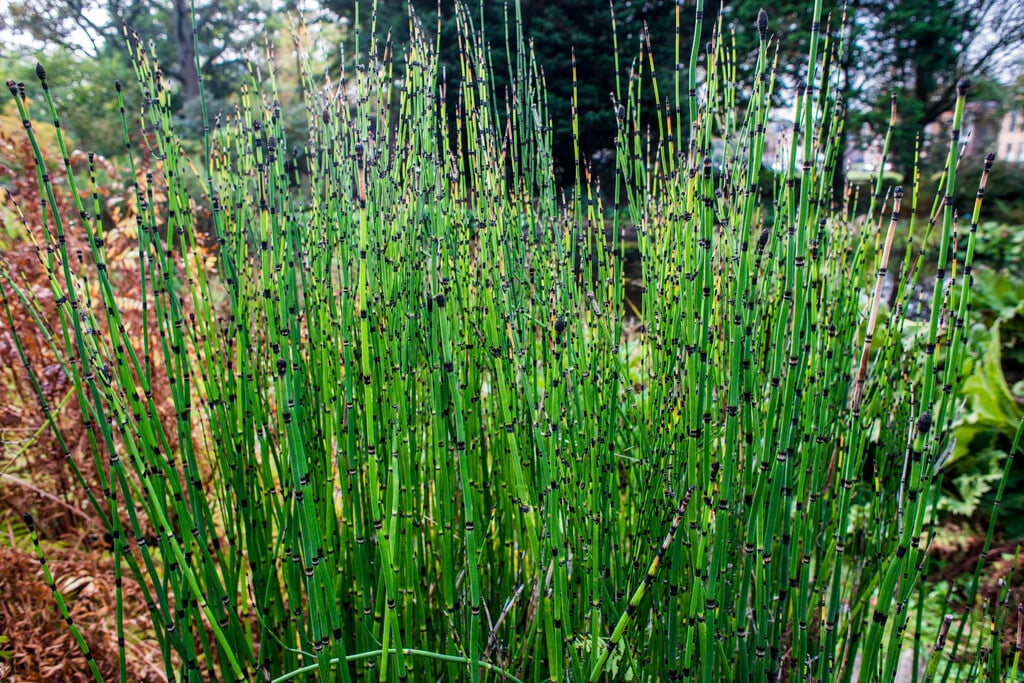Equisetum hyemale var. affine
A spreading, evergreen perennial, forming clumps of cylindrical, reed-like stems to 90cm tall. The rough-textured stems have black bands at the joints and can be used to create vertical accent points in the garden. However, this plant has the potential to become a nuisance and should be planted in a container to restrict its vigorous roots
Size
Ultimate height
0.5–1 metresTime to ultimate height
2–5 yearsUltimate spread
1.5–2.5 metresGrowing conditions
Moisture
Poorly–drainedpH
Acid, Alkaline, NeutralColour & scent
| Stem | Flower | Foliage | Fruit | |
| Spring | Green | |||
|---|---|---|---|---|
| Summer | Green | |||
| Autumn | Green | |||
| Winter | Green |
Position
- Full sun
- Partial shade
Aspect
East–facing or North–facing or South–facing or West–facing
Exposure
Exposed or Sheltered Hardiness
H6Botanical details
- Family
- Equisetaceae
- Native to GB / Ireland
- No
- Foliage
- Evergreen
- Habit
- Suckering
- Genus
Equisetum are also known as horsetails or living fossils as they are the only living genus in Equisetaceae, a family of vascular plants which reproduce by spores rather than seeds. Plants have a rush-like appearance.
- Name status
Correct
How to grow
Cultivation
Grow in moist to boggy soil in sun or partial shade; a container standing in a tray of water is ideal
Propagation
Propagate by division
Suggested planting locations and garden types
- Architectural
- Patio and container plants
Pruning
No pruning required
Pests
Generally pest-free
Diseases
Generally disease-free
Get involved
The Royal Horticultural Society is the UK’s leading gardening charity. We aim to enrich everyone’s life through plants, and make the UK a greener and more beautiful place.
